Traditionally Professional Courtesy is something that physicians gave each other - but we had to be careful with it when…
News 12/23/15
Top News
ONC releases its 2016 Interoperability Standards Advisory that lists federally recognized interoperability standards and guidance.
Reader Comments
From Ambient Occlusion: “Re: homegrown EHRs. Regenstrief/Eskanazi signed up for Epic earlier this year.” Somehow I was thinking Marshfield Clinic and my fingers typed Regenstrief instead when I was trying to think of the last few health systems that are using homegrown EHRs (BIDMC is the other) now that Vanderbilt is moving away from WizOrder/Horizon Expert Orders in favor of Epic. I replied as such to Ambient Occlusion, who then pondered what Marshfield will do after pumping so much money into Cattails. He added a theory that they’ve probably capitalized some of their software development costs and would therefore not only need to spend big money to replace their self-developed product, but even more to write down whatever of its depreciated costs that remain on the books. Marshfield has tried to commercialize Cattails, but given that the newest press release on their site is from 2010, I’m guessing it’s not burning up the EHR charts.
From Benign Growth: “Re: HIStalk. I’m new here and I can’t figure out who’s writing what.” That’s easy – every word you read in an HIStalk news post is mine (Mr. HIStalk, aka Mr. H) unless I’m taking a rare day off and Jenn is covering for me. It always amuses me when people refer to the HIStalk “team” as through there’s a bunch of us working full time in an office. I write HIStalk, Jenn writes HIStalk Practice, Lt. Dan writes the HIStalk headlines and HIStalk Connect, and Lorre handles the webinars and sponsor activities. We each do our own thing with minimal contact with each other since we’re spread out and don’t need much supervision. Our past and present day jobs didn’t often support the creativity and fun we enjoy here. It will be 13 years in June since I started HIStalk and I still can’t wait to start filling the blank page every day.
From Rough Taxpayer Sex: “Re: DHMSM. SPAWAR has added a sole-source hosting agreement to Leidos/Cerner. This looks like a total scam. Either they lied in the RFP about what they could provide or they’re lying now.” DoD awards Leidos a no-bid Cerner hosting contract that it claims won’t cost more than $5 million per year, explaining the need to modify the scope of the $4.3 billion award as follows below. Note that it’s nobody’s fault according to the wording – Leidos didn’t suggest that service and the government people involved could not have anticipated the need for it (I expect this excuse to be re-used for future expensive scope changes):
While Leidos solution meets the contract requirements, many of the capabilities of the DHMSM EHR cannot be fully realized unless they are hosted in the Cerner environment. In order to fully enable these functionalities, the DHMSM EHR requires direct access to proprietary Cerner data, which is only available within Cerner-owned and operated data centers. The proprietary data consists of quantitative models and strategies which are the result of extensive Cerner-funded research and development efforts conducted over 15 years. The models are based on analysis of clinical, operational, and financial data associated and incorporate vast amounts of actual longitudinal patient data and information collected through other Cerner applications. Forward deploying the DHMSM EHR into any other hosting solution would prevent access to these models and data. Significant functionality exists within the required system that utilizes machine learning and computational statistics to enable predictive analysis and decision support that directly impact patient outcomes. Therefore, no other contractor can satisfy the requirement. Prior to awarding this performance-based contract, the Government could not have anticipated this solution-specific need, which is why this scope was not included in the original RFP.
HIStalk Announcements and Requests
I use the responses from my once-yearly reader survey figure out what I’m doing well and not so well. I would appreciate two minutes of your time to complete it. That will also place you in the running as the randomly chosen recipient of a $50 Amazon gift card. I used previous survey results to make changes that became into some of the most important attributes of HIStalk, so your time will not be wasted. I get a lot of great ideas from the survey, although I have to be careful not to: (a) fix something that isn’t broken; (b) do something that isn’t true to my personality or passions; (c) take on more work than I can handle effectively; or (d) do something that would make writing HIStalk less fun so that I would be tempted to quit doing it.

An anonymous Epic developer donated $200 for my DonorsChoose project, to which I applied matching funds from my anonymous vendor executive as well as from private foundations to purchase these items:
- Fraction, decimal, and percent learning tools for Mrs. Sutton’s third grade class in Herrin, IL
- A Chromebook for Ms. Marlowe’s kindergarten class in Charlotte, NC
- Math games and learning materials for Ms. Osborne’s elementary school class in Columbia, SC
- Math games and a learning center rug for Mrs. Begg’s middle school class of learning and emotionally disabled students in Baltimore, MD


Ms. Osborn’s Florida second graders, many of whom are children of immigrants and frequently-moving military families, are working in teams using the STEM materials we provided via DonorsChoose to solve real-world engineering problems.

Also checking in is Ms. C from South Carolina, who teaches a class of severely intellectually disabled seventh and eighth graders for whom our DonorsChoose donation provided a library of around 100 high-interest, low-readability books. She provides background on the student in the photo above as an example: “The picture of the boy reading a book with my Dr. Seuss hat on is a child from a low-income family. He will come to school hungry and is usually very sleepy because he can’t sleep at night. He is very capable of reading better than he does right now. He loves to go over to my little classroom library and pick out a book to read. The other day he told us that he is actually leaning something this year. Until this project was funded, I really didn’t have enough books for a classroom library, but now I do.”
It’s that time of year where we’ve now gotten past the shortest day (December 21) and spring and the HIMSS conference aren’t far away. I’ll probably take this Friday and next off since I doubt many folks will be reading on Christmas and New Year’s eve and day. I expected to be mostly loafing around for most of December since it’s usually slow, but I’ve been pretty busy with fresh news and lots of companies are signing up as HIStalk and HIStalkapalooza sponsors. It’s good to keep busy, for which I thank every person who reads HIStalk and every company that supports it.
Thanks to the following sponsors, new and renewing, that have recently support HIStalk, HIStalk Practice, and HIStalk Connect. Click a link for more information.
Webinars
None in the next few days. Contact Lorre for webinar services. Past webinars are on our HIStalk webinars YouTube channel
Acquisitions, Funding, Business, and Stock
Invoice Cloud acquires Imagevision.net, which offers the HealthPay24 point-of-service payment product used by 100 hospitals.
The professional regulator in England bars two former finance directors of one-time NHS software supplier iSoft (now owned by CSC) from practicing accounting for eight years for their involvement in the company’s financial irregularities nearly 10 years ago. Four company executives were acquitted in 2013 of securities charges.
Sales

Northern Arizona Healthcare chooses Cerner Business Office Services for its ambulatory clinics and ACO, apparently replacing Athenahealth.
Announcements and Implementations
Summit Healthcare releases a Cerner-specific version of its domain compare-and-sync platform that supports data extraction, analysis, regression, and testing.

Halifax Health (FL) goes live with Wolters Kluwer Health’s POC Advisor for real-time, data-driven sepsis alerts and advice.
Government and Politics
CMS releases the Medicare Drug Spending Dashboard that includes the top 15 drugs by overall annual cost and per Medicare user as well as the drugs whose price jumped the most in 2014. The $1,000 per tablet hepatitis C drug Sovaldi topped the list as Medicare spent $3.1 billion on it at an average per-patient cost of $94,000. The most expensive drug per patient was Remodulin, used to treat pulmonary arterial hypertension, which cost an average of $134,000 per patient per year. You will recall that the Affordable Care Act prohibits Medicare from negotiating drug prices, a carrot added by the White House to appease drug companies who otherwise would have used their political clout to kill its administration-defining initiative.
Kansas state auditors say the state’s delayed Medicaid system rollout was due to unrealistic timelines and unmet functionality promises from contractor Accenture. Federal taxpayers are footing most of the cost of the Accenture contract that is worth $135 million upfront and $50 million for ongoing maintenance. Auditors predict that the project will run $46 million over budget, with nearly all of that bill also being passed along to federal taxpayers.

CMS is investigating complaints filed by two former Theranos employees who claim that the lab company instructed its employees to continue using its proprietary testing technology despite “major stability, precision, and accuracy” problems. The former employees said results varied widely and that quality control checks of the testing method often failed. Theranos says the former employees are just disgruntled. The company continues to claim that it will publish peer-reviewed data proving its claims, but says they aren’t yet ready.
Other
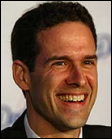
Baseball data analysis expert and Harvard-trained statistician Paul DePodesta, played as a composite character by Jonah Hill in the movie “Moneyball,” joins Scripps Translational Science Institute in a part-time, unspecified role. He says in an interview conducted by his new co-worker Eric Topol, MD:
If there’s a player who has been in the Major League for say five years, we have an awful lot of data on that player. So when we’re making a decision on that player, we may largely be using data to make that decision. Go to the total opposite end of the spectrum – a 15 year old playing in Maracaibo, Venezuela – we don’t have a whole lot of data on him. We have some, what I would call sort of outside data. We know about players form that area, we know players of his size, his strength, his age, his position. Not necessarily specific things about him, but we can create general conceptions about what that player could be expected to do based on all these other players have done who are similar to him in same fashion … people are trying to get their arms around uncertainty and trying to make better decisions for the future and realizing that data can really help them do that. Whether it’s financial services or trucking or farming, I mean there are all sorts of different industries that I never even dreamed of back when the book first came out and even when the movie came out that have reached out to us — to me or to Billy or to others — and have said, “We’re doing this now and it’s really helping — do you have other ideas about what we might be able to do?

Speaking of “Moneyball,” I’ll say again that of the many conference speakers I’ve seen, the best was Billy Beane of the Oakland Athletics. If you haven’t seen the movie, here’s a recap. Beane’s team didn’t have the money to sign or retain big-name players who made occasional crowd-pleasing plays yet failed to achieve consistency, so he measured and analyzed available player performance data to choose lesser-known and therefore less-expensive players who produced consistent but unspectacular results, like getting on base a high percentage of the time, and then managed using those specific strengths to produce team wins. I thought it was bizarre that Health Catalyst chose Beane as a keynote speaker for its first Healthcare Analytics Summit in the fall of 2014 until I heard him.
A USC report predicts that Medicare spending will double to $1.2 trillion by 2030 as per-beneficiary costs rise 50 percent, caused by aging baby boomers who — much more than in previous generations — are overweight, disabled, and suffering from chronic conditions. In other words, people who might have died from now-preventable heart disease will live longer and more expensively in requiring treatment of cancer and Alzheimer’s disease.
CMS identifies at least five drugs whose cost doubled in 2014 from the new Medicare Drug Spending Dashboard that I mentioned above, with the ridiculously unoriginal Vimovo (two old generic drugs combined, naproxen and esomeprazole, the first for pain and the second to reduce side effects caused by the first) leading the list after a new company bought the drug and raised its price 500 percent. Ancient drugs captopril and digoxin were among the leaders, which cries out for some sort of action to stop companies from buying the rights to old drugs and then jacking up their prices to yield pure profit without the inconvenience of performing research studies or creating something new that might benefit patients rather than shareholders.
I also note that Vimovo maker Horizon Pharma is using a now-common drug company trick to increase patient demand while raising societal costs overall – its “support card” promises that patients will pay little or nothing as co-pays even while the company is sticking their insurance company for the inflated cost. Medicare spent $39 million on this lame drug in 2014, which of course means doctors prescribed it quite a bit for reasons that probably aren’t entirely rational.

It hasn’t been a great week for Martin Shkreli, who in addition to being arrested on securities fraud charges and then fired as CEO of Turing Pharmaceticals, has now been fired as CEO and board member of KaloBios, the drug company he bought just a few weeks ago. Meanwhile, Shkreli tells the Wall Street Journal that the government trumped up securities charges in desperately trying to find something to arrest him for. He also claims that his over-the-top behavior is “a social experiment” that makes him an undeserving target. He would make an ideal HIStalk interview, although I’m not holding my breath.

This image has been used so many times without attribution that I can’t tell where it came from, but I saw it on LinkedIn and liked it.
Gallup’s annual poll of most honest and ethical professions finds nurses, pharmacists, and physicians taking the top three spots. The last-place finishers are members of Congress, telemarketers, and lobbyists.
Sponsor Updates
Blog Posts
- Start with Why (Iatric Systems)
- Unified Care Teams Need a Unified Communications Strategy (PatientSafe Solutions)
- Information Management #2 – Bad Data (Clinical Architecture)
Contacts
Mr. H, Lorre, Jennifer, Dr. Jayne, Dr. Gregg, Lt. Dan.
More news: HIStalk Practice, HIStalk Connect.
Get HIStalk updates.
Contact us or send news tips online.



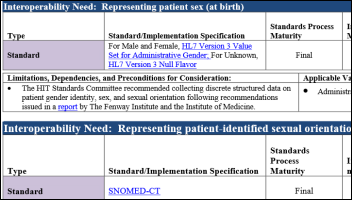

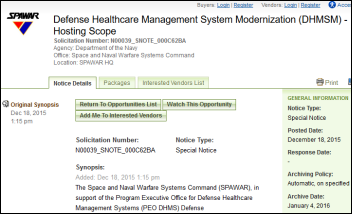
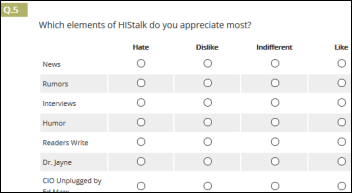

















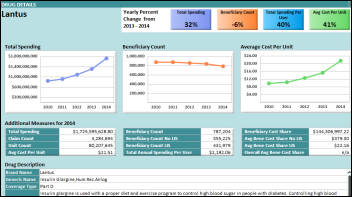
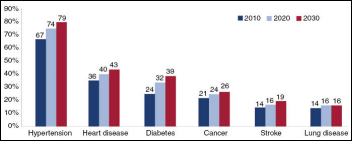


ONC Interop Standaeds Advisory…
Now pray tell, what is the keyword in the above ONC phrase?
Interop?
Standards?
Advisory?
If you guessed Advisory you win. And that my pretties this is where the rubber meets the road, and where systems developers can hit a tree. The definition of ‘advisory’ per the ONC document is: the use of ‘best available standards’, implying as ONC learns more the standards will change. If you are a system house with limited resources and spend a thousand hours coding to today’s ‘best available standard’, then with the next ONC update a better ‘available standard’ is noted and issued …well you know the result.
To sum, this is the ‘standard’ till we find a better one, which can happen at almost anytime.
If you are a BoB or small shop and are running legacy (or legacy based) systems you are in trouble because all of the API standards and processes are based on new technologies. That makes adaptation all the more tedious and difficult.
Playing the guessing game as to where. when ONC will land with specific standards can be risky. A handful of those revisions can make or break a small vendor.
The alternative is to wait for the final rules, then in the 11th hour your back is against the wall and your client’s are screaming for updates to meet their MU 3 target date. Makes for lousy client references which equates to lost new sales.
In summary, if you are a BoB and your core product competes with a big box EHR vendor, you are going to have really big competitive problems. If you have a highly unique and specialized product that’s an appendage to an big box EHR you probably will be bruised, but not buried.
Good luck to the hundreds of BoBs and small systems shops out there, they’ll need it.
Martin Shkreli conveniently forgets that he’s been under investigation for a year and that his disgusting behaviour just made prosecutors even more eager to get him.
I thought this article I read in the fall was a good read, it was no surprise he was arrested.
http://www.newsweek.com/martin-shkreli-drug-manipulation-daraprim-retrophin-375416
Probably beginning to see why Leidos had such a low bid for DHMSM – missing pieces that are just being “discovered” – uh huh.
Re:Cattails. That website is for selling their old platform. Apparently they are leaving that up while simultaneously advertising ‘Clinicals’, ‘Insights’, and ‘Patient’ through http://www.mcis.com. However, the user stats on the new site appear to be for the old platform.
re DHMSM: Can someone explain why a secure VPN can’t be used to connect a DoD data center (probably DISA, running the EMR) back to a Cerner data center for the analytics piece? Do they truly need to be in the same facility?
So Dr. Jayne gets no mention in the who does what? I would have thought that oversight wouldn’t happen as having an MD write regular posts about MD and CMIO life from both vendor and practitioner perspectives is one of the bright spots of the week.
[From Mr H] Dr. Jayne’s column appears twice weekly as the only post identified as to who wrote it while the rest of us post without identifying ourselves. I’m pretty sure the reader who was asking who is who couldn’t help but notice the Dr. Jayne part of the title and her avatar at the end.